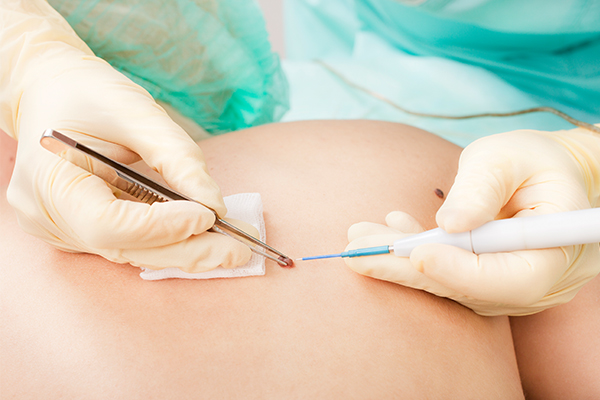In this article:
Multiple treatment options are available for skin cancers, each suitable to different types or stages.

Moreover, patients can make certain lifestyle changes to support their overall mental and physical health. These changes include a healthy diet, regular activity, avoiding sun exposure, and limiting alcohol intake.
People at High Risk of Skin Cancer
All of the top three skin cancers are more common in people with:
- Fair skin
- Red or blond hair
- Light eye color with an inability to tan (1)
Moreover, the two main patient-controlled causes of skin cancer are:
For basal cell carcinoma (BCC), additional risk factors include:
- Immunosuppression
- Certain genodermatoses (such as Gorlin syndrome) (3)
For squamous cell carcinoma (SCC), other high-risk factors include:
- Immunosuppression (i.e., organ transplantation)
- Human papillomavirus
- Chronic scarring conditions
- Familial cancer syndromes
- Arsenic exposure
Considerable evidence suggests that intermittent sun exposure (i.e., recreational tanning and childhood sunburns) and chronic sun exposure both lead to increased incidence of BCC and SCC. (4)
Worldwide, cutaneous melanoma has been increasing in frequency more than any other skin cancer. (5) The risk factors for melanoma include:
- Dysplastic nevus syndrome (and a first-degree family member with a history of melanoma) or a medium to large congenital melanocytic nevi. (5)
- Intermittent, intense exposure to UV radiation with an increased number of sunburns is more of a risk factor for melanoma than chronic exposure (which tends to lead more to nonmelanoma skin cancers and precancerous actinic keratoses). (6)
Common Treatments for Skin Cancer

The treatment for skin cancer is based upon the type of skin cancer and the stage.
1. Basal cell carcinoma
- Topical creams. Superficial BCCs are often treated topically with creams, such as 5-fluorouracil and imiquimod, with a cure rate of 68% and 80%, respectively. (7)
- Surgical treatment. Low-risk BCC (extending beyond the top layer of skin) is often treated with electrodesiccation and curettage (cure rate 73%–97%). (8)
- BCC of the central face, hands/feet, or genitals is often treated with Mohs micrographic surgery as it provides good margin control with a low recurrence rate of 1%. (9)
- Metastatic BCC or BCC considered to be unresectable by surgery can be treated with a chemotherapeutic agent called vismodegib. (10)
Other treatment modalities are:
- Intralesional injection therapies
- Photodynamic therapy (PDT)
- Radiation/brachytherapy
2. Squamous cell carcinoma
- Topical creams. SCC in situ (superficial as it is confined to the top layer of the skin) is often treated topically by 5-fluorouracil cream, but this is considered off-label use. (11)
- Surgical methods. SCC is normally treated with surgical excision, with high-risk SCC being treated with excision and possible sentinel lymph node biopsy.
Other treatments include:
- Adjuvant radiation therapy
- Systemic chemotherapy (used for metastatic SCC) (12)
3. Melanoma
- Surgical excision is the gold standard of treatment for melanoma (with possible sentinel lymph node biopsy depending on the depth of the lesion).
- Immunotherapy (using the body’s own immune system to destroy cancer cells) with cytotoxic T-lymphocyte antigen-4 (CTLA-4) blocker and program death-1 (PD-1) blocker has helped to revolutionize the treatment for metastatic melanoma. (13)
- Targeted therapy with BRAF inhibitors has also increased survival rates in patients with metastatic melanoma. (14)
Preventive Measures Against Skin Cancer

Sun protection is the number one way to prevent skin cancers.
- Use sunscreen with at least SPF 30 and preferably with 5% or higher zinc oxide as one of the active ingredients. Apply liberally and repeat every 2–3 hours while outdoors. (15)
- Wear protective clothing, hats, and sunglasses.
- Do not use indoor tanning.
- For patients with an increased risk for skin cancer, oral OTC nicotinamide at 500 mg twice a day was shown to decrease the incidence of nonmelanoma skin cancer by 23% over a 12-month period. (16)
Final Word
As UV exposure is the primary cause of skin cancers, it is best to protect your skin from sun exposure and avoid indoor tanning.
Moreover, while getting treated for skin cancer, it is essential to take self-care measures to reduce the side effects of treatment and increase your immune power.

- Was this article helpful?
- YES, THANKS!NOT REALLY


